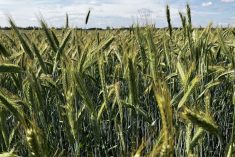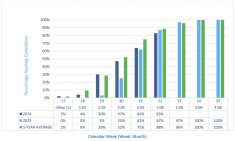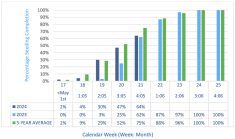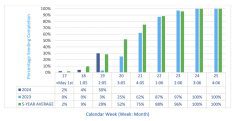They’re calling it the most expensive crop that Prairie farmers have ever planted.
But the skyrocketing price of fertilizer, fuel, herbicides and other inputs isn’t the only worry. Lately it’s often been about getting your hands on products you’ve paid an arm and a leg for.
Clint Jacula thought he had the bases covered. He ordered his chemicals in November, much earlier than usual, and kept checking on the status of his order.
It wasn’t enough.
“Two weeks before we start spraying, I get a phone call that we’re not going to have this stuff,” said the grain and cattle producer who farms north of Vermilion, Alta.
Read Also
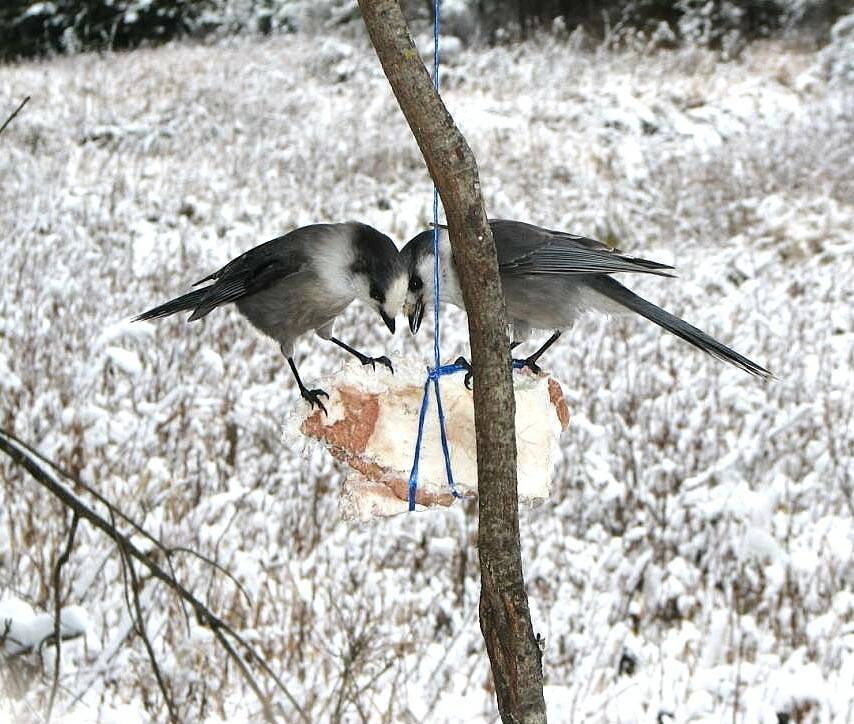
Hunting with whiskey jacks
Canada jays, or whiskey jacks, are bold little deer hunting pals that don’t mind getting close, if it means a piece of the offal or deer fat left over from a successful forest hunt in Manitoba.
By that measure, Brent Konstapel can count himself somewhat lucky, although the last-minute delivery raised his stress level.
“The chemical showed up a week ago, and we ordered it this winter,” the grain farmer from the Spirit River, Alta. area said June 28. “We were rushing to get it sprayed here in the last week.”
There’s also been stress when looking at expense accounts. Magrath, Alta. area grain farmer Sean Stanford said nitrogen prices were almost triple what they were a year ago.
“That was a big shock, that one,” said Stanford, adding that come spring, prices of herbicides started taking off, too. “It was at least 50 per cent up on everything from glyphosate to in-crop products. That one hurt as well.”
“I don’t think it’s doubled, but the costs are higher for the glyphosates — Roundup and Liberty has really gone up,” added Jacula.
And while grain and oilseed prices are still high, they’re starting to slip.
“We’re crunching numbers here and we’re over double on our nitrogen and phosphate fertilizer over what we paid last year,” said Konstapel.
Jacula said farmers know the cost of nitrogen fertilizer is directly tied to natural gas prices but the speed of the price increase caught everyone off guard.
“Our prices are more than double what they were and what we usually expect,” he said.
The sharp rise in the price of grains and oilseeds had many producers dreaming of a great year following last year’s drought. But with the cost of putting in this year’s crop, producers now need commodity prices to stay high, said Konstapel.
“We’re not getting the prices we need. Grain prices need to stay up if we have to pay these high input costs as well.”
And it’s not as though there was much that farmers could have done to reduce costs, said Jacula.
“We can choose to use less, but we need these products and you need to put these on.”
The anxious times aren’t over. As harvest time creeps closer, many are worried about equipment parts or previously ordered machines.
“Parts are really expensive if you can even find them,” said Stanford.
Buying new or used farm equipment is difficult, too.
“There’s a shortage right now,” he said. “The dealers can basically charge whatever they want because people are at their mercy. If you need a piece of equipment, there are no options and you basically have to pay it (the asking price).”
Anything that comes on the market is quickly snapped up, Stanford added.
“It’s a supply-and-demand thing. If demand is high, people can crank up the price and do whatever they want with it.”
Equipment horror stories are increasingly common.
“A neighbour was dealing with an equipment purchase, but it didn’t show up for seeding, and they had already sold their old equipment, and they had to find something else because the new one didn’t arrive on time,” said Konstapel
“We’re hearing the same thing for the fall. Combines and new headers are not showing up on time, so (farmers who) have already sold or traded their previous units will have to find something to take it off.”
Jacula knows people in the same situation.
“Neighbours ordered equipment that never even came this spring,” he said. “They sold their (old) equipment and the dealers were trying to rent stuff back. How can you charge someone for something they didn’t get? It’s crazy.”
His advice is simple: “Farmers, don’t let your used equipment go until all the new stuff is in the yard.”
And expect the unexpected — or even the bizarre — when you call parts suppliers.
“We had a tractor this spring that blew a back tire,” said Jacula. When he phoned around, he was told it would take a couple months to get a new tire.
“You can’t have a tractor standing for a couple months,” said Jacula, adding he was eventually able to track down a replacement.
“I don’t know how many phone calls and how much time we spent just trying to get a tire,” he said. “We didn’t really have a (selection) choice. We just took whatever he had.”
Jacula said he isn’t sure whether companies aren’t carrying as much inventory as usual or whether supply chain disruptions are to blame. Either way, it’s stressful.
“You just can’t wait. We’re on a time deadline,” he said. “You have to have everything in the ground so fast and by a certain date.”
He’s not expecting a return to the old days, at least when it comes to a lot of prices.
“Parts have gone up a lot. Labour has gone up a lot. If you get anything worked on, shop rates have gone up.
“It’s a direct reflection of daily costs — your power, heating bills, and all those things have gone up for everybody. Everybody is fighting them.”



